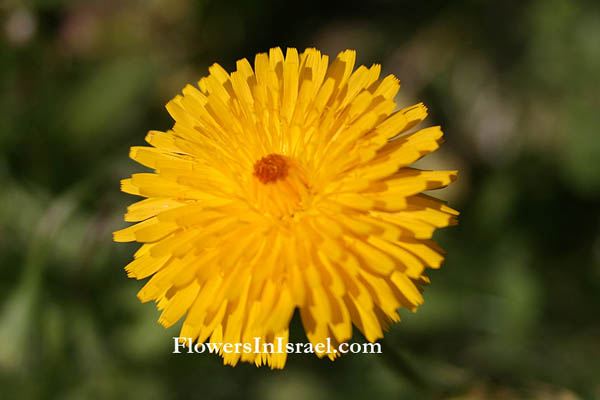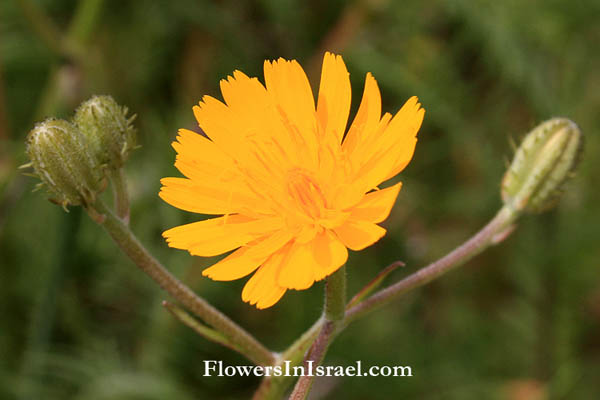Hebrew: מררית שסועה, Arabic: حوذان
| Scientific name: | Picris asplenioides L. | |
| Synonym name: | Picris radicata (Forssk.) Less. | |
| Common name: | Oxtongue | |
| Hebrew name: | מררית שסועה | |
| Arabic name: | حوذان | |
| Family: | Compositae / Asteraceae, מורכבים |

|
| Life form: | Therophyte, annual | |
| Stems: | Erect or diffuse, branched from the base and sulcate | |
| Leaves: | Alternate, dissected, pinnate, dentate or serrate | |
| Flowers: | Yellow | |
| Fruits / pods: | Dimorphic achene | |
| Flowering Period: | March, April | |
| Habitat: | Sand | |
| Distribution: | Mediterranean Woodlands and Shrublands, Semi-steppe shrublands, Shrub-steppes | |
| Chorotype: | Saharo-Arabian | |
| Summer shedding: | Ephemeral |

Derivation of the botanical name: Picris, Greek picros, bitter, from the bitter taste of the plant. asplenioides, asplenios, asplenos, ασπλενοϛ (ασπλενιοϛ) literally: without spleen, allegedly a curative of spleen problems, spleenword, named by Pliny and Discorides and taken by Linnaeus to be Asplenium ceterach; Asplenium like. radicata, radico, to take root; having roots. The Hebrew name: מררית, mararit, from מרר, mrar (= to be bitter); properly loan translation of the Latin name Picris (=a bitter herb), from Greek pikris, from pikros (= bitter).
|